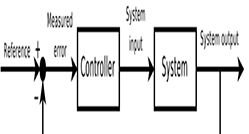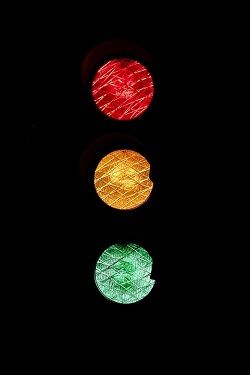ELECTRICAL CONTROL SYSTEMS (THE SAUCE OF ELECTRICAL ENGINEERING)
Control systems are considered to be a secret sauce in the profession of engineering in general. Engineering as it were aims at simplifying life by proffering solutions to pre-existing problems we face while going through our day to day activities. In fact, I can bet while doing whatever work you do, you have once wondered if there existed a better and easier way to do things and save time. Most devices that solve problems today needs to be programmed to do so, your standing fan has a manual control mechanism which enables you to either increase or decrease the velocity of its rotation.

Power control room: from pixabay under CCO license
What is a control system
To present a proper understanding of a control system, we need to define do a little throwback of the definition of a system;
System: A system can be defined as the coming together of different components for the purpose of performing a common function. A good example of this is the Steemit community is a system, comprising of different communities or niches for the purpose of building a strong blockchain which we would all agree makes life better for us.
Therefore, a control system can closed-loop as a system that can direct, coordinate, monitor itself or an external system. Control systems is a very broad engineering field therefore we would cast our focus on electrical control systems.
IN EVERY CONTROL SYSTEM we would always have to keep the following terms in mind;
• Plant: This refers to the part of the system to be controlled or monitored, it can also be referred to as a process.
• Controller: This can either be a device inside the system or outside the system which regulates the plant or the process
• Output: Certain books refer to this term as (the controlled output CO) and is defined as the signal of interest, the desired result to be obtained from the system
• Input: This is the signal injected into the system from an external energy source. It is majorly referred to as the reference input.
• Disturbance: This can be seen as an alien signal, which can be generated either externally or internally that affects the system in a negative manner. E.g. heavy lightning, power surges and other unwanted sources of energy in the system.
The basic way control systems start from applying a reference input, this reference input which majorly comes from an energy source, then enters into the controller which may be inside or outside the system, the controller produces an actuating signal (a signal that causes action) this actuating signal then enters into the plant or process and therefore produces the desired output.
CLASSIFICATION OF CONTROL SYSTEMS
While there are various outlooks to classifying a control system i.e
- Natural control systems
- Man-made control systems
- Combinational controls systems.
In engineering, further steps have been taken to further break down the classes of control systems into the following.
- Analog and digital control systems
- Linear and non-linear systems
- Time-variant and time-invariant control system
- Linear and Non-Linear control system
- Deterministic and Stochastic control systems
- Single Input Single Output (SISO) and Multiple Input Multiple output control system and last but not the least
- An open loop or closed loop system
We would, therefore, lay more emphasis on open loop systems and closed loop systems for more understanding of the subject matter.
The Open loop system 
Wikimedia commons under CCO license and edited by me @lawkay
As the name implies, ”OPEN LOOP” it makes us understand the fact that it acts in such a way that its input is not dependent on the output, in order words it has a straight command line and cannot change its activity except the input source is disconnected, example of such systems is
• An electric switch: Once an electric switch has an input (on or off) it doesn’t stop executing that command for any set of output conditions. In fact, if no one turns the switch off during the day, it will remain on.
• Another example of an open loop system is an Electric hair drier, hot air keeps coming out of it even if your hair happens to have gotten dry. BEWARE
• Toasting machine: How funny it can be when toasting your bread only to find out that the bread wasn’t even done, then as said earlier, you ask the famous question, “couldn’t things have been done better”
• The volume of your Radio: Once you tweak the volume on your radio, it stays that way, the environment you are or the need notwithstanding,
I believe this should give you a clear understanding of how open loop control systems work, this system has its pros and cons, the open systems are so common, we use it in our day to day life, it is not complicated to operate, it is very economical and very easy to maintain, it is somewhat stable, however the open loop system doesn’t optimally simplify life for us.
Have you ever been driving your car only for a traffic light signifies you to stop, when there are no obstacles and you can easily pass a freeway traffic lights notwithstanding (well I plead you don’t try that the cops don't see it that way), but the point here is that open loop systems do not give accurate and flawless results, there always has human intervention to complete its already started work. Also, it is impossible to correct the output of this system, its like Garbage In Garbage Out (GIGO).

The closed-loop control system

Wikimedia commons under CCO license
It is just the converse of the open loop, it is a control system in which the output signal will determine the input signal, one of the main differences between the open loop and the closed loop system is that the closed loop control system has a feedback mechanism which momentarily/incessantly carries signal (in form of commands) from the controlled output to the reference input, in fact, the open loop system can easily be converted to a closed loop system by the addition of that feedback mechanism.
Examples of this types of system include
• Your water level controller: When water is added into this kind of system (the water is the input) and the water reaches a threshold point, a feedback signal is sent to that input telling the system to stop putting water into that system
• A missile launch: Have you watched movies where the only thing the government needs to do to launch a missile is to lock on their target, and no matter where that target goes, the missile would still catch up with him. This is achieved by a closed loop control system in that, the direction (input) of the missile is controlled by the target and present position of a missile (output).

A missile from pixabay under CCO license
• An air conditioner: well unlike your standing fan referenced in the open loop system, the air-conditioner has a more sophisticated technology in that it adjusts its temperature with respect to the condition of the room.
• Automatic Electric Iron: Well-designed Iron these days cannot get your cloth burnt even if you leave it on the garment. this is owing to the fact the temperature of the iron at every point is controlled by the external temperature of the garment.
Even Humans!!! DETAILS SOON!!!
Closed loop systems, like the open loop, also has its pros and cons. The closed-loop system is a very accurate control system in that any potential error emanating from its output (through disturbance or open loop down sidedness) is corrected by its output feedback, due to automation life is easier. Also, disturbances in this system can be sensed and walked over, it has a high sensitivity to temperature changes.
The long lines of possibilities in an open loop system also come with its cons, for instance, the design of a closed-loop system is not all that straightforward it requires lots and lots of techniques to design. Because of this, it makes the system costlier to produce and require a higher cost of maintenance, the major problem is in stabilizing the system i.e. getting a control function suitable for the system to make it controllable.
HUMAN BEINGS AS A CLOSED LOOP CONTROL SYSTEM

Human Brain from pixabay under CCO licence
To prove that humans exhibit the features of a closed loop control system, follow closely.
You would agree with me in our Biology class back in those days, we were taught about the ability of the body to adapt to hot or cold temperatures through vasodilation/vasoconstriction (temperature regulation), now that is a feature of a closed loop system, just as the thermostat in a home regulates its temperature, the hypothalamus regulates the temperature of the body, in addition to, it also harmonizes temperature-control activities in the body such as the sweat glands, skin and blood vessels, you can get more details about this on this link
Psychologically, human also acts as a closed system in the sense that. If is tell a short man to pick a book from a high shelf, he would most likely make the first attempt to take it, immediately he sees he is not tall enough to get it he immediately either jumps or finds another alternative to getting the book. This is because the input was to try picking it without a jump, immediately a feedback mechanism (his eyes) sent his brain a signal that he needed to jump in order to take the book which brought about a new input condition controlled by the previously controlled output.
CONCLUSION
Research is still going on in the field of control system, but we would see now that a knowledge of control systems remains essential when it comes to designing of electrical systems and devices, automation technology has emerged rapidly because of the knowledge of control systems.
REFERENCE
Of course this post just gives you a guide in your approach to control systems, if you want to further and expand your knowledge, you can consult
- Principles of control systems by S.C Goyal
- closed loop and open loop control systems
-Control system technology @ britannica
I hope you have been once again enlightened by this post.
If you write STEM (Science, Technology, Engineering, and Mathematics) related posts, consider joining #steemSTEM on steemit chat or discord here. If you are from Nigeria, you may want to include the #stemng tag in your post. You can visit this blog by @stemng for more details.

The control systems are a wonderful engineering aspect.. I loved them from the input to the feedback.
Of course it is, most engineering systems remains lifeless without control!!
I mean whats the use of voltage and current without a means to harness its potential in engineering systems?
Thanks so much for taking out time to read this piece
Control systems are very important in engineering and virtually all other sectors. The feedback mechanisms and real time data make them great. In fact, we can say they are the basis of automation systems.
Well done
Of course!!
The world is going automation and the scope of control engineering has gotten broader.
Thanks for reading this piece
Control systems save us the stress of repeating jobs. I enjoyed reading your very simple style of writing.
Thanks so much.
I adopted writing this style of writing in orderto educate non-engineering oriented folks amidst the communit so we can all relate with the knowledge being passed accross
How kind of you, it's really a nice way to educate people.
Control systems are the backbone of modern day engineering. They cut across all aspects ranging from industrial applications to automotive, power generation and many more. They ensure all parameters of a system are correct by regular monitoring and feedback.
Kudos!
Very correct!!!
Thanks for reading
Control system makes engineering easier. With sensors and automation, tasks gets easily done.
It's very nice the way you churn it out...Thanks for the gift..
Yea thats true...
Its always a privilege to contribute to the community.
Keep it up
Congratulations @lawkay! You have completed some achievement on Steemit and have been rewarded with new badge(s) :
Click on any badge to view your own Board of Honor on SteemitBoard.
For more information about SteemitBoard, click here
If you no longer want to receive notifications, reply to this comment with the word
STOPWow
From your detailed article, it is crystal clear that closed loop is better than open loop control system
I studied a course called control system in the university and I must say it is very essential for now and the future to come
This control system has some lengthy and quiet confusing calculations most students hate
Just like converting transfer function to state space and vice versa, also cannonical forms, converting a mechanical system to state space which requires an indepth knowledge in laplace transforms
Thanks for sharing, big thumb up.
How eould I join that technology and electrical community.